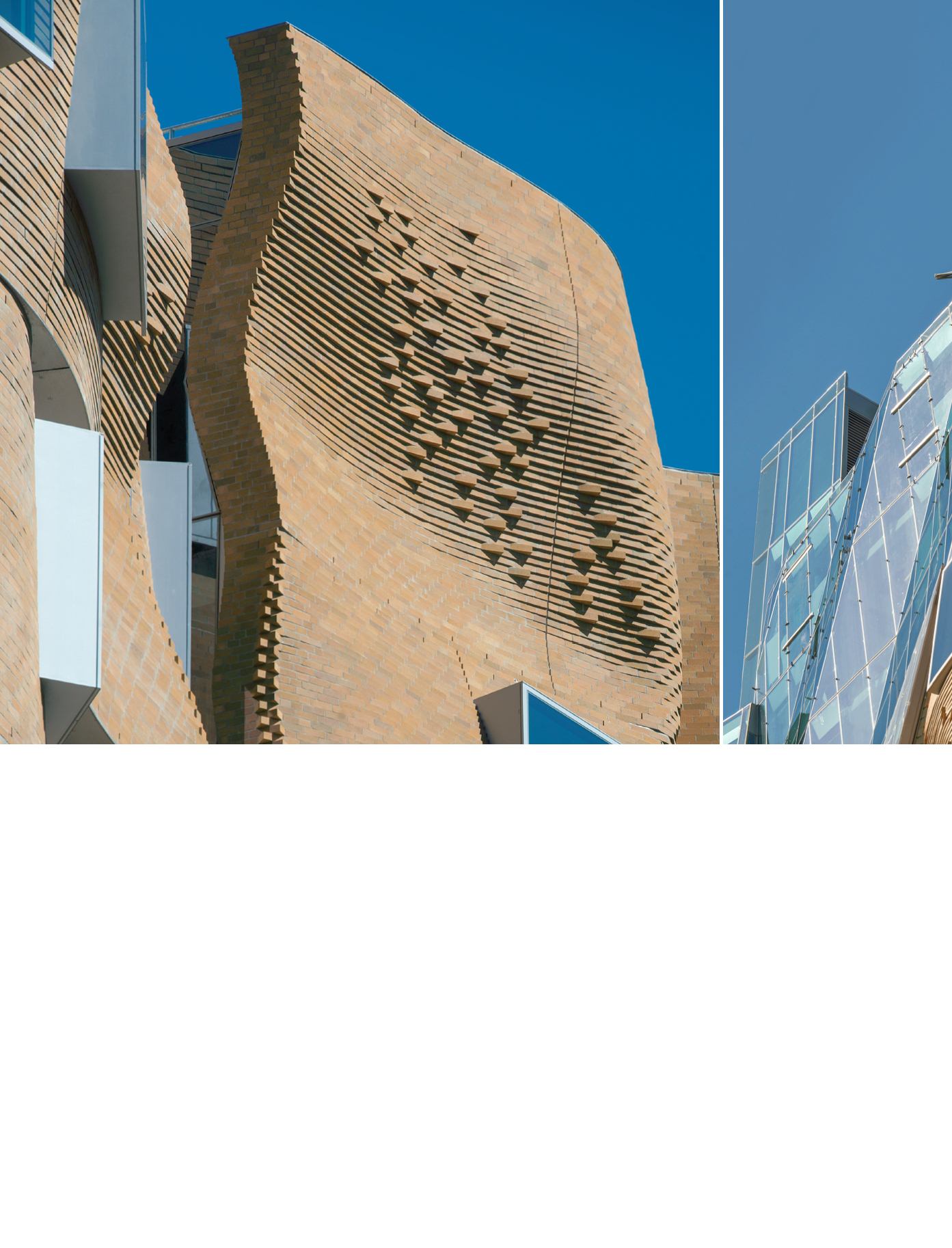

8
|
design
mag
Although the twelve-storey Dr Chau Chak
Wing Building at the University of Technology,
Sydney presents as glass when looking
towards the city, the overwhelming focus of
public and media attention has been on the
brickwork which dramatically marks the
Ultimo Road and Goods Line elevations.
The curvilinear design of the brick facade of
the has been popularly dubbed a “crumpled
paper bag” or even a “melting chocolate
castle”.The public is obviously intrigued by the
use of this familiar building material in a way
that defies description as well as gravity.
Describing the building’s external design is a
challenge, even for Daniel Beekwilder, director
of Sydney’s Daryl Jackson Robin Dyke which
acted as executive architects for Gehry
Partners.“I wouldn’t attempt to describe it in
words,” he says simply,“I would describe it by
using pictures. It’s a brick building, but it’s one
like you have never seen before!”
The inspiration for the curvaceous facade
came from the fold.“Throughout history,” Gehry
contends,“ the fold has been fascinating to
philosophers and artists,” allowing them“to
explore colour and form and shadow and
light.”
Frank Gehry is best known for his metal-clad
buildings, but his choice of brick was driven in
part by the UTS campus and neighbouring
buildings.Although he had long wanted to
design a facade with complex folds “I’ve never
really gotten to do a lot of that because when
you start doing it the contractors and
everyone start telling you, you can’t do it,” he
says, adding that “I’ve always wanted to do
that with brick.”
Despite the focus on the facade, this will be a
highly functional building, as you would
expect in a Business School.The “tree of
knowledge” theme informs the internal design
which will encourage collaborative learning
and the breaking down of hierarchies.“We
wanted an ethos of light, spacious site lines,
both horizontally and vertically, all very
organic,” Roy Green, the school’s dean, told
The Australian.
Bowral Bricks, a division of Brickworks Building
Products, played a pivotal role in designing
and manufacturing special bricks for this
project, and helping develop bricklaying
techniques that have transferred Frank Gehry’s
vision from a jotting on a restaurant tablemat
to reality.
Don Bradman had just left Bowral Public
School and was playing for the local team
when Bowral Bricks opened its first kiln in 1922.
Brickworks Ltd acquired the company in 2001
and after a large capital injection, the plant
began making premium-quality dry-pressed
bricks for the architectural market.















